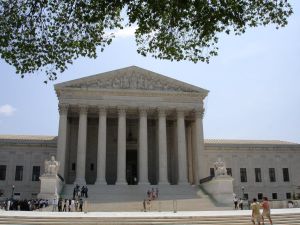 For those around the country who don’t know, Florida has just lost it’s 3rd or 4th commissioner of education in less than 3 years under Governor Rick Scott. The latest to resign held the same position in Indiana and was recruited by Scott for his right-wing bona fides, in particular, believing in the notion that taxpayer dollars should be paid to private entrepreneurs to build and run Charter Schools. Not surprisingly, the guru of the concept is none other than Jeb Bush. To the Jeb Bushes of the world, conservatism is just another word for funneling taxpayer money to private individuals. Florida now has private prisons. It’s a huge industry … but it needs bodies to make money. Not only will these folks be resisting efforts to decriminalize marijuana, they’ll be pushing for stiffer prison sentences for other offenses. Bodies = $$$$$$.
For those around the country who don’t know, Florida has just lost it’s 3rd or 4th commissioner of education in less than 3 years under Governor Rick Scott. The latest to resign held the same position in Indiana and was recruited by Scott for his right-wing bona fides, in particular, believing in the notion that taxpayer dollars should be paid to private entrepreneurs to build and run Charter Schools. Not surprisingly, the guru of the concept is none other than Jeb Bush. To the Jeb Bushes of the world, conservatism is just another word for funneling taxpayer money to private individuals. Florida now has private prisons. It’s a huge industry … but it needs bodies to make money. Not only will these folks be resisting efforts to decriminalize marijuana, they’ll be pushing for stiffer prison sentences for other offenses. Bodies = $$$$$$.
Read the article reproduced below, written by Fred Grimm, South Florida’s top watchdog reporter, to get a flavor for the scam.
Fred Grimm: Tony and Tina Bennett’s school for conflicts
By Fred Grimm
fgrimm@MiamiHerald.com
Tony Bennett slunk away from his job as Florida commissioner of education, leaving us with an ever-deepening distrust of a school-reform movement dominated by for-profit education conglomerates and big-money political donors.
He left after just seven months on the job, muttering that he had been undone by “malicious and unfounded” news stories coming out of Indiana.
He wasn’t. He was undone by a grade-fixing scandal of his own making back when he was Indiana superintendent of education (until unhappy voters tossed him out of office in November). He lost his job in Florida because, in his previous incarnation, he manipulated the statewide grading formula to fabricate an A rating for a K-10 charter school in which two-thirds of the high school classes flunked algebra, while 30 percent failed English.
“It is absurd that anyone would believe that I would change the grade of a school based on a political donor or based on trying to hide a school from accountability,” Bennett told reporters. But Bennett and his staffers left an email record last September indicating he did just that.
The education chief hanged himself with his own words and those of his staffers, who spent nine frantic days finagling the state grading formula, searching for a fix for that unacceptable C scored by Christel House Academy. Looking, as one of his staffers put it so succinctly, for that magic “loophole.” For obvious reasons. The charter school was the namesake of founder Christel DeHaan, who also happened to have donated $2.8 million to the Indiana Republican Party and, more importantly, $130,000 to the superintendent’s own political campaigns.
Bennett, an apostle of Jeb Bush’s corporate-financed school reform movement and rigid common-core testing standards, had gone around the state citing Christel House as an example of the superiority of charter schools over funky, conventional public schools. Unhappily, as Bennett’s chief accountability officer (something of a misnomer) noted, Christel’s 10th-graders had registered “terrible” scores on their statewide algebra test. Only 33 percent passed. He reacted like a high school football coach whose star player had flunked math. Something had to be done.
Ultimately, Bennett and his staffers simply erased the lowly ninth- and 10th-grade results altogether and reconfigured the results for Christel DeHaan’s school using only elementary and middle school scores. It worked swimmingly — until last week, when The Associated Press unearthed those self-incriminating emails. (Nor did it help that the Indianapolis Star reported that in 2011 the superintendent of Indianapolis’ public schools had begged Bennett to grant a similar waiver for a couple of inner-city public schools. No dice. Bennett had ignored the super’s pleas and dished out failing grades to the two no-account schools.)
By Thursday, Bennett was gone. Ousted in Florida because of his shenanigans in Indiana. The grade-fixing scandal had stripped him of the moral clout necessary to force yet another high-stakes testing regime onto Florida public schools and to peddle the notion that charter schools are the big fix for Florida’s education woes.
But Florida citizens had another reason to doubt Bennett’s objectivity when it comes to charter schools. The Indianapolis Star reported last week that his wife, Tina Bennett, was hired in June by Fort Lauderdale-based Charter Schools USA. It was another of those sweet, moneyed coincidences in Bennett public service. In 2011, he had awarded this very same company nice fat contracts to take over two failing high schools and a middle school in Indianapolis. (One of those schools, T.C. Howe High School, happened to be one of those two schools that had requested but were refused the same kind of waiver granted Christel House last September. Such a small world.) And Charter Schools USA has become one of the big players in the Florida rush to charters.
Continue reading
 Florida Injury Attorney Blawg
Florida Injury Attorney Blawg










